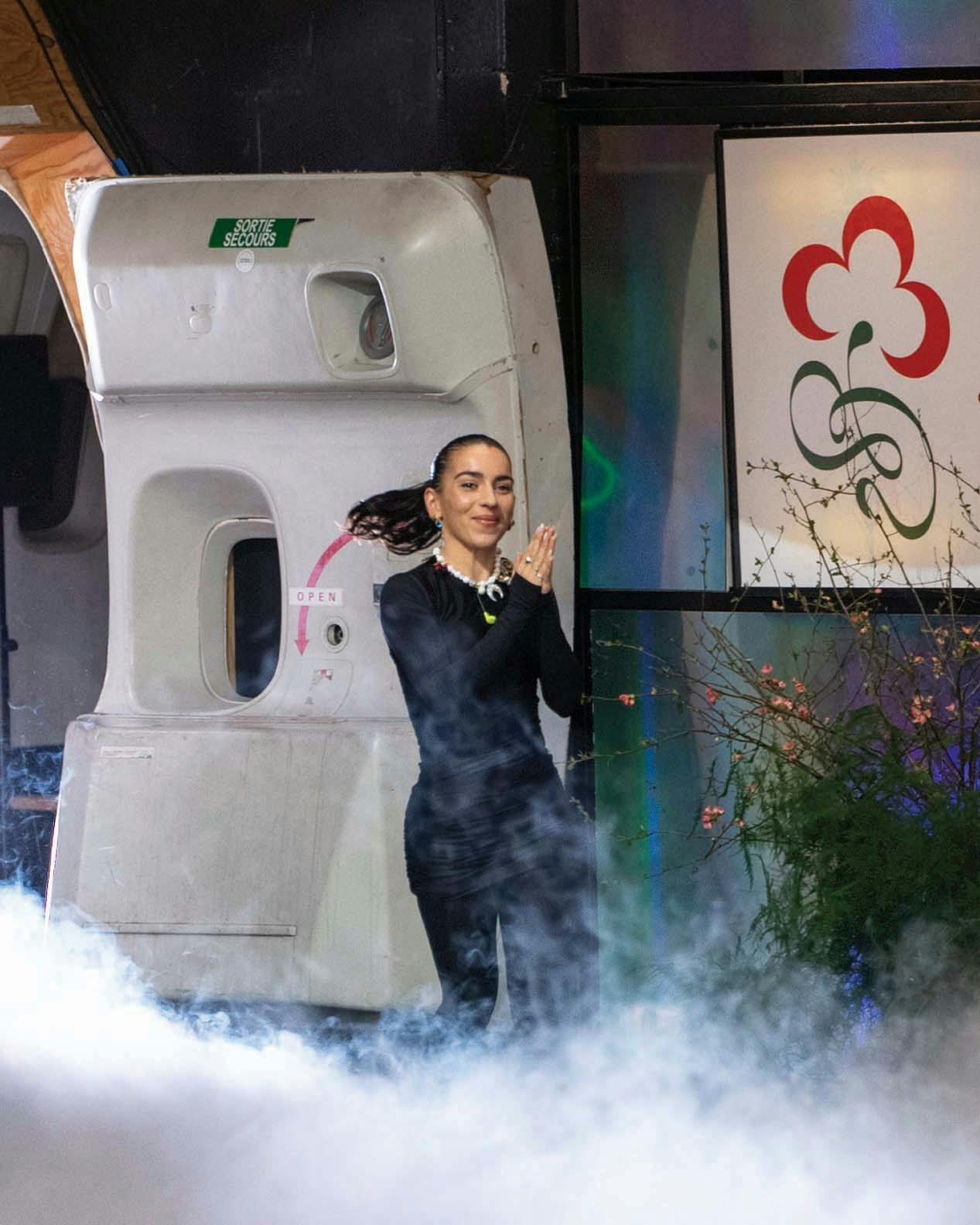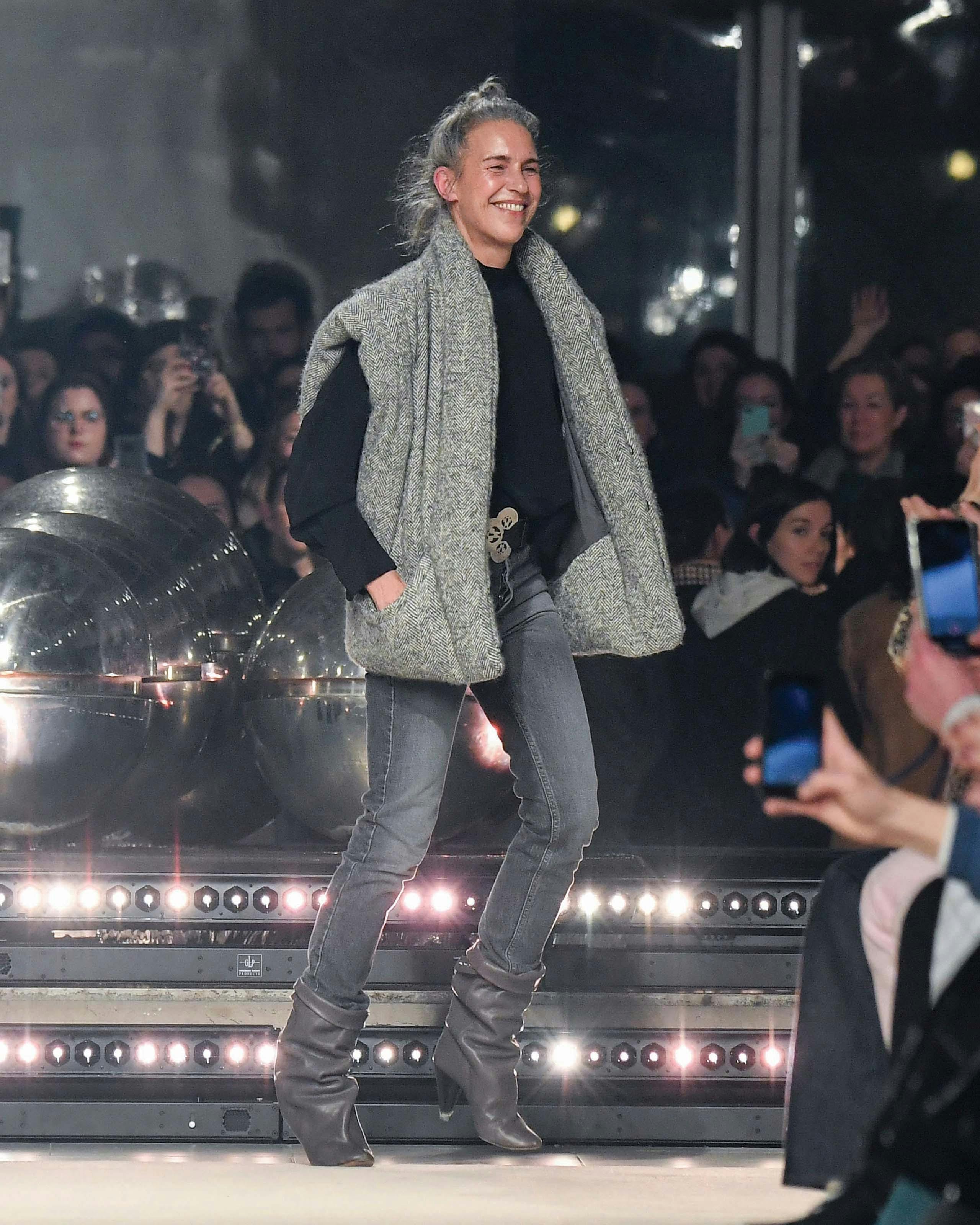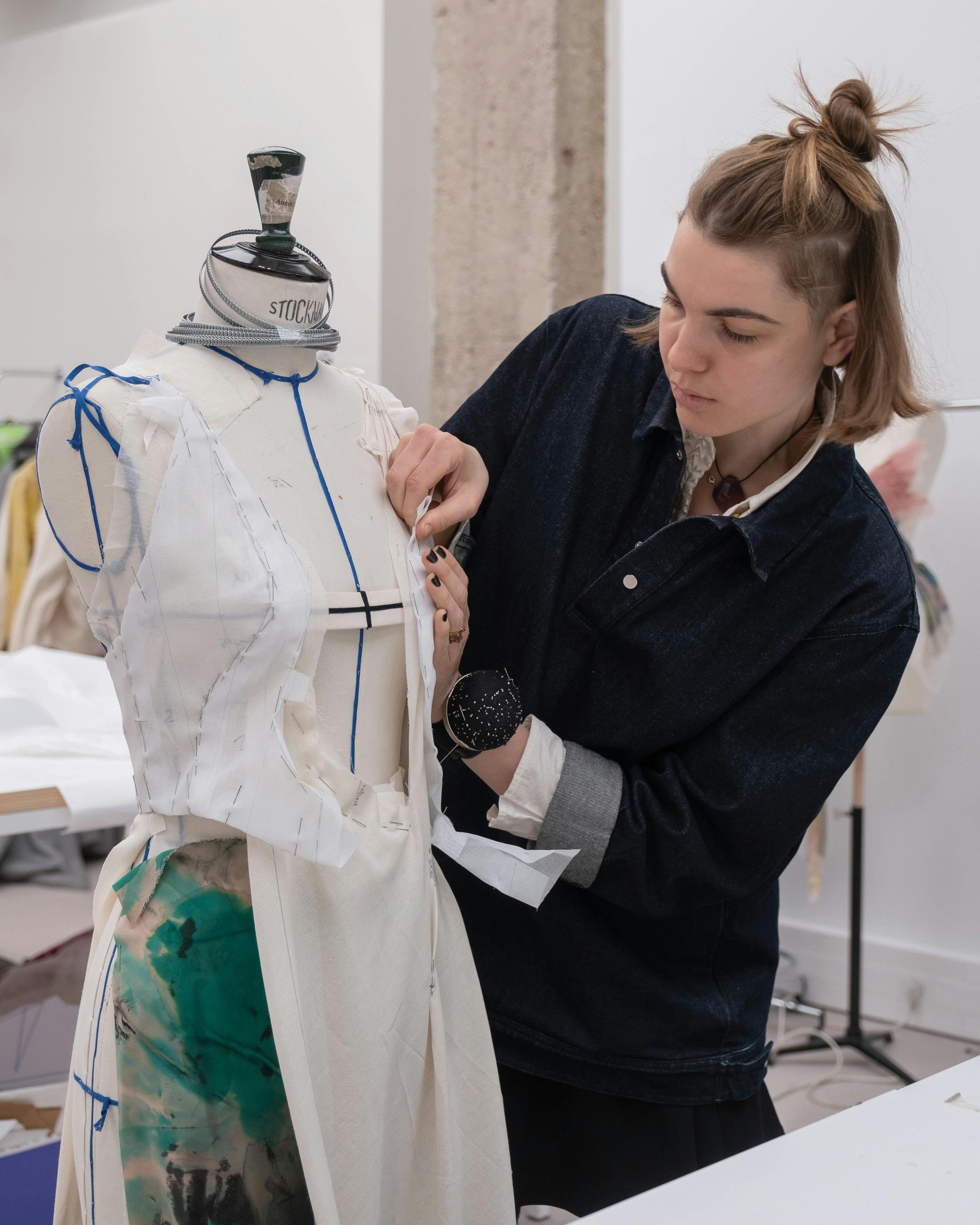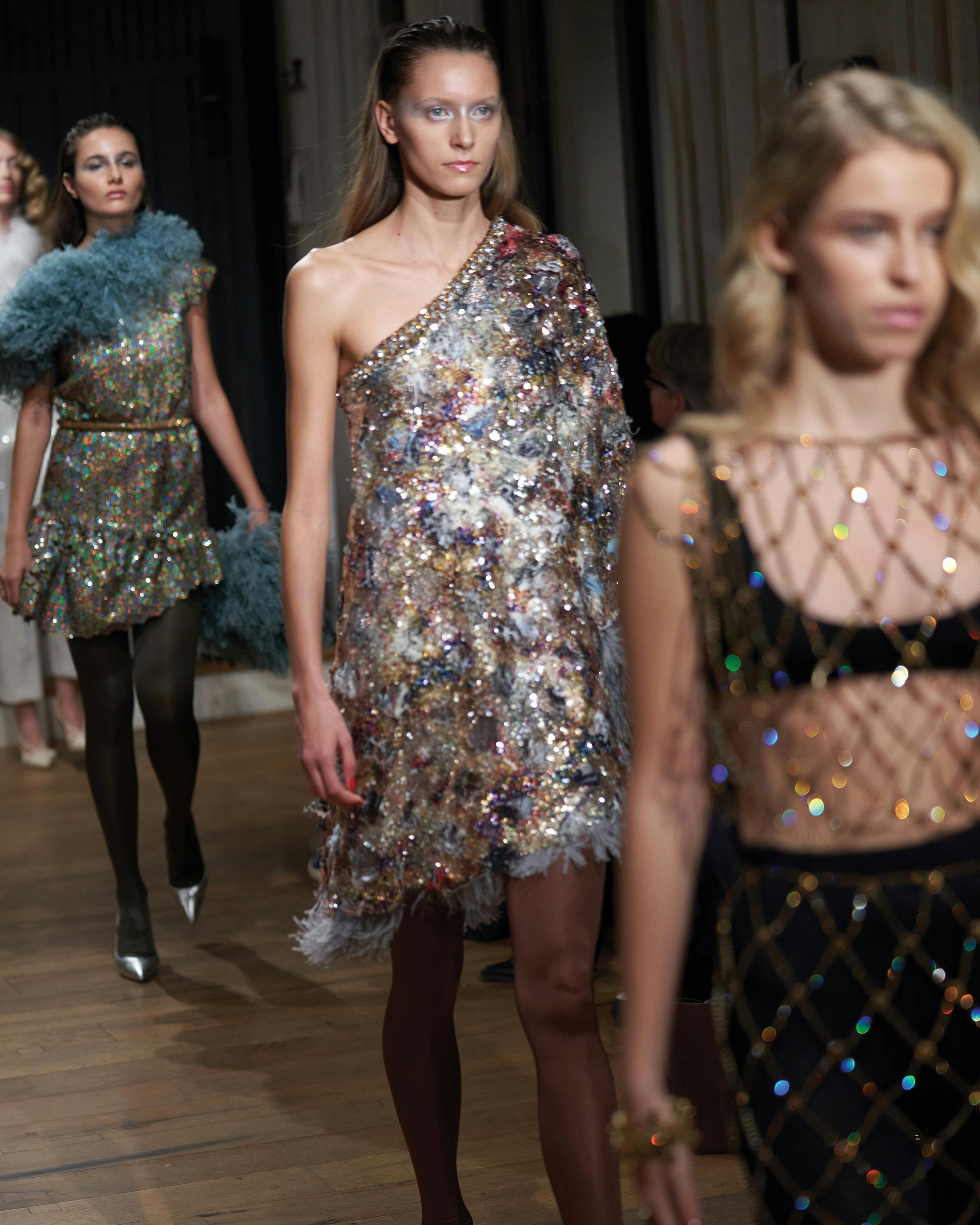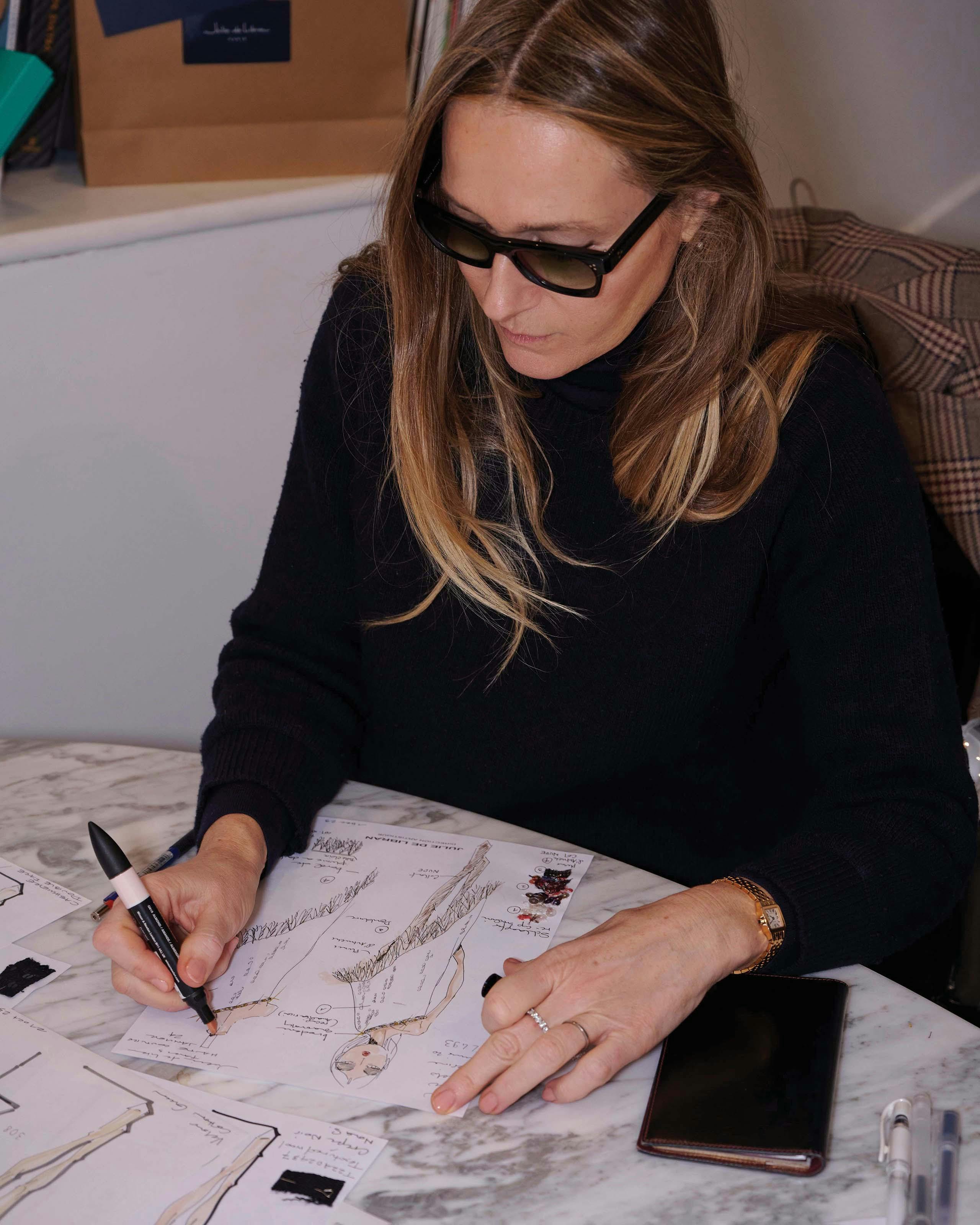
Is French fashion staring down an identity crisis? Even posed as a question, the concept’s implications are unflattering. And yet considering how few French designers are actually installed as the heads of Paris’s largest and most established maisons—Chanel, Dior, Saint Laurent, Givenchy, Lanvin, Balenciaga, Celine, for example—the inquiry merits interrogation. France’s female designers are even fewer, making Nadège Vanhee-Cybulski, who’s presided over Hermès since 2014, practically a unicorn.
It’s no revelation that the fashion industry demands a serious reckoning when it comes to the overwhelming scarcity of female head designers. This has been fashion’s most undesirable trend—and a source of constant criticism—for over a decade. And yet of all the major fashion capitals, Paris—the city that gave us such legendary female-founded brands as Lanvin, Chanel, Schiaparelli—suffers the most from a shortfall.
“There are fewer women than ever. It’s incredible,” says the Paris-based fashion designer Julie de Libran, who founded her namesake brand in 2019 after working as the artistic director at Sonia Rykiel for five years. Before that, she was the creative director for womenswear at Louis Vuitton. De Libran thinks about the lack of female peers often, she noted, most recently during the latest reshuffle of mostly-male designers between the world’s top luxury brands.
Given the current outlook, it’s nearly impossible to believe that Coco Chanel achieved her 4,000-employee-strong fashion empire over a century ago—decades before she could even vote. “The inter-war years were quite special. There was this opportunity where it was socially acceptable and somehow highly regarded for women to be able to build commercial empires, and be recognized with very official titles, too,” explains Emilie Hammen, a fashion historian, who teaches at the Institut Français de la Mode (IFM) in Paris and was named director of the Palais Galliera fashion museum in July. Women in fashion also became key figures in cultural diplomacy during this time, representing France at world fairs and various events. Fashion was a serious business, but according to Hammen, “not as dictated or organized through its financial assets.” Now the two are inseparable.
In France, where fashion is a €154-billion business (comprising 1.7 percent of the country’s GDP), the world’s two largest fashion conglomerates, LVMH and Kering, have shown little interest in risking the financial health of a brand like Gucci or Dior on an unknown designer, especially not now, with looming tariffs, geopolitical unrest, and overall declining profits to offset. The result, then, is a merry-go-round of the same big names—and mostly male: Pierpaolo, Demna, Jonathan, Matthieu. “There’s more support for men designers,” one Parisian designer told me over the phone from her studio. “The money and the business direction is up to men most of the time, and while it’s a very competitive industry, it’s also very male-centrist.” De Libran, whose design experience also includes stints at Prada and Versace, echoes this: “I’ve always been in businesses where, at the end of the day, it’s mostly men that are directing, making the decisions.”
For independent French designers, securing investment is even less guaranteed without a white-hot streak straight out of the gate. By all appearances, Marine Serre, who won the 2017 LVMH prize and whose collections routinely receive critical nods, has been a runaway success, yet money remains a scarce resource, she says. “It’s a bit like upcycling—you have to work with what you have, and only what you have.”
But money isn’t the only obstacle for French design talent. Until recently, fashion wasn’t seen as a venerable career choice. “It wasn’t accepted,” says de Libran, who went to design school in the 1990s. “I was lucky that my parents believed in me and it was something that I could study, but it wasn’t really respected at the time.” Even so, de Libran attended Istituto Marangoni in Milan.
Christelle Kocher, the artistic director of Chanel’s Maison d’Art Lemarié, also left France for design school. “I got a scholarship to go to Central Saint Martins—one of the best schools in the world,” says Kocher, who also launched her own brand, Koché, in 2015. Compared to France’s own competitive options, which were private and costly, the London-based Central Saint Martins, with an alumni roster that included John Galliano, Alexander McQueen, and Stella McCartney, was an obvious best choice. Kocher returned to France after graduating, whereas de Libran stayed on in Milan for several years to continue working—a logical next step for many French students studying abroad, but one that can easily lead to a shortage of talent back home.
Meanwhile, the message at French schools, some say, is not to dream too big. David Siwicki runs his own PR agency in Paris and counts 2024 LVMH prize winner Hodakova and this year’s ANDAM prize winner, Meryll Rogge—both female-designed brands, neither French—as his clients. “It feels like design schools in France train students to work at brands, but not run them,” he says. Case in point: Louis Vuitton’s Creative Director of Womenswear Nicolas Ghesquière is the only French designer currently overseeing a major luxury fashion house owned by LVMH; there are none at any Kering-owned brands.
While there’s no doubt that France does need to step up when it comes to boasting more of its own on the Paris Fashion Week calendar, the tidewinds may be shifting, thanks to a greater global regard of fashion as an esteemed career choice. To meet the fresh surge of attention—as well as evolving industry standards—top fashion schools like ESMOD Paris and IFM are adapting their curriculums and leveling up across the board. “I think IFM has definitely improved,” says de Libran, who visits the Paris campus regularly and hires students for internships at her atelier. “Their equipment for knitwear and pattern-making has become, probably, some of the best.” With competitive programming (and some star power, as IFM is the only non-American institution selected by Beyonce’s BeyGOOD Foundation to receive $100,000 in Renaissance scholarships), the next generation of fashion grads is already set up for more success than their predecessors.
Still, while nurturing homegrown talent on a formational level benefits all genders, allowing space for an equal number of women to ascend to the top remains less guaranteed. Regardless of nationalities, it’s been downright thrilling to see Sarah Burton’s masterful debut collection at Givenchy last season, Meryll Rogge’s recent appointment as Marni’s creative director, and Chloé’s Chemena Kamali take on her relatively new role with an exacting vision and confidence. And of course, Isabel Marant, whose namesake label turns 30 this year, remains one of fashion’s most beloved rebels. That in itself is something to salute. Celebrating the few is not enough—not nearly—but it’s an inspiring start.

